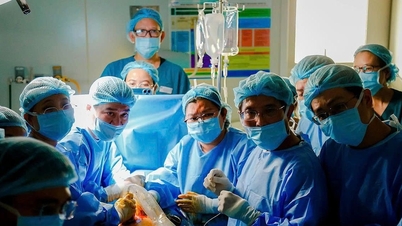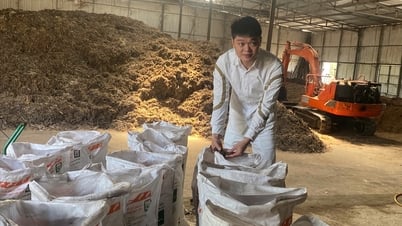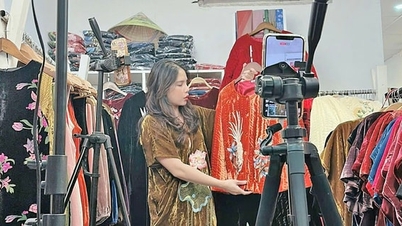Recently, a photo with the caption “If he really loves you, he will be willing to give you everything” has been circulating on social networking sites. In the photo is the image of a girl who looks like she just had a nose job, next to a boy with a bandaged ear.
Many people think that the guy gave his ear cartilage to his girlfriend to get a nose job. Therefore, the story became hot, attracting the attention of netizens, receiving thousands of likes, comments and shares. Many girls were quite surprised that they could take someone else's ear cartilage to get a nose job and commented that they would ask their boyfriend for ear cartilage to get a nose job.

The content attracted attention on social networks because of suspicions that the girl had her nose lifted from her boyfriend's ear cartilage.
Regarding this incident, Dr. Tong Hai, Head of the Department of Microsurgery and Reconstruction, Center for Plastic Surgery and Aesthetics, National Burn Hospital (Hanoi) said that scientifically, it is possible to take autologous ear cartilage to lift the nose, but he has never encountered a case of nose augmentation using someone else's ear cartilage. Theoretically, it is possible to take someone else's ear cartilage to lift the nose, but in reality, with more than 20 years of experience, he has performed nose augmentation surgery for thousands of customers, but it seems that no doctor chooses to do it because the treatment process is complicated. While there are many other methods and materials on the market today. "The donation and transplantation of tissues and body parts from one person to another (allograft) has been permitted by law and the Ministry of Health in a number of areas such as kidney transplantation, liver transplantation, heart-lung transplantation, etc. However, to be able to transplant, there must be similarities in blood type, HLA, pre-sensitivity...", Dr. Hai analyzed.
According to experts, to graft bone, rib cartilage, and allograft skin, the bone, rib cartilage, and allograft skin must be processed to remove all surface antigens. After processing, the rib cartilage must be preserved in a fresh-keeping solution before it can be used. And the prerequisite is to be approved by the management agency. “Regarding rhinoplasty, there are many methods today, including conventional rhinoplasty, semi-structural rhinoplasty, and structural rhinoplasty. There are also many materials used, such as rhinoplasty with completely artificial materials such as silicone cartilage and fureform cartilage. It is possible to perform rhinoplasty with completely autologous cartilage, rib cartilage, rib cartilage combined with ear cartilage and inferior temporal fascia, and dermis. In addition, it is possible to perform rhinoplasty with artificial cartilage combined with autologous cartilage (ear cartilage, rib cartilage, etc.)”, shared the Head of the Department of Microsurgery and Reconstruction.
Previously, taking autologous ear cartilage for nose augmentation was quite popular. The advantage is that autologous ear cartilage has many characteristics similar to nasal cartilage such as being soft, having enough thickness, being able to cover the tip of the nose, build the nose column, graft the nose wings, and being easy to take. However, the disadvantage of this technique is that when building the column, it will not be as hard as rib cartilage, covering the tip of the nose can be absorbed, or cause the tip of the nose to shrink after a while. Taking cartilage from the ear causes cartilage defects in the ear, taking too much can cause irreversible ear deformities. "The most common method is rhinoplasty, which often combines artificial cartilage and body fascia or mesodermal fascia. The reason is that the surgery is quick, the technique is simple, and there are few complications, but it may not meet all the requirements for the customer's nose shape," Dr. Hai analyzed.
To choose the most suitable material for their nose shape, customers need to find reputable, licensed facilities that ensure medical standards, doctors with certificates to practice plastic and cosmetic surgery, with experience, and materials used are permitted by the Ministry of Health.
Q. FLOWER
Source

































































































Comment (0)